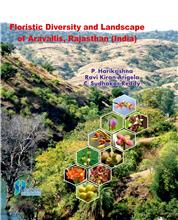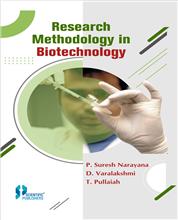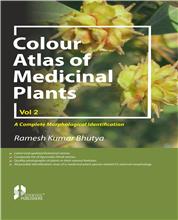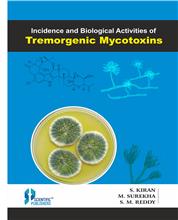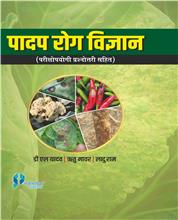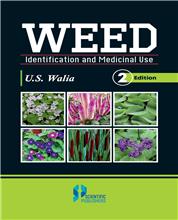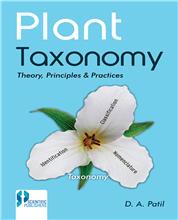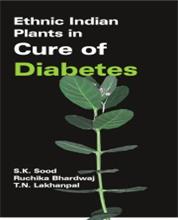Preface
1.
Microbiology Laboratory and Instrumentation
1.1 Rules
and Precautions for A Microbiology Laboratory
1.2 Basic
Requirements for A Microbiology Laboratory
1.3 Bunsen
Burner
1.4
Autoclave
1.5 Hot Air
Oven
1.6
Incubator
1.7 Bod
Incubator
1.8 Laminar
Airflow Cabinet
1.9
Microscope
1.10 Types
of Microscopes
1.11
Measurement of Microorganisms
1.12
Centrifuge
1.13 Ph
Meter
1.14
Spectrophotometer
1.15 Balance
1.16
Distillation Apparatus
1.17
Immunoassays
1.18 Microbiological
Procedures
1.19
Dialysis and Ultrafiltration
1.20
Lyophilisation and Flash Evaporation
1.21
Collection of Biological Samples
2.
Preparation of Media and Culture Techniques
2.1 Types of
Culture Media
2.2
Sterilization and Disinfection
2.3 Preparation
of Medium for Cultivation of Bacteria
2.4
Preparation of Medium for Cultivation of Fungi
2.5
Ubiquitous Nature of Bacteria
2.6 Transfer
and Colony Selection Techniques
2.7 Pure
Culture Techniques
2.8 Cultural
Characters of Bacteria
2.9 Demonstration
of Selective and Differential Culture Media
2.10
Cultural Characters of Actinomycetes
3. Isolation
Techniques
3.1
Isolation of Bacteria from Air
3.2
Isolation of Microorganisms from Soil by Dilution Plate Method
3.3
Isolation of Microorganisms from Soil by Warcup Method
3.4
Isolation of Microflora from Rhizosphere
3.5
Isolation of Microorganisms from Phylloplane
3.6
Isolation of Lactobacillus
3.7
Isolation of Protozoa from Soil
3.8
Isolation of Anoxygenic Phototropic Bacteria by Entrichment Technique
3.9
Isolation of Bacteriophages
3.10
Cultivation of Anaerobic Microorganisms
3.11
Monosporic Culture of Fungi
3.12
Isolation of Seed Mycoflora
3.13
Isolation of Aquatic Fungi by Baiting Technique
3.14 Isolation
of Yeast
3.15
Isolation of Cyanobacteria from Soil
3.16
Demonstration of Specificity of Bacteria for Culture Medium
3.17
Isolation of Phototrophs (Algae) by Enrichment Culture Technique
3.18
Differentiation of Bacteria with the Help of Culture Medium
3.19
Isolation of Chemotrophs with Enrichment Culture Technique
3.20
Isolation of Pathogenic Bacteria from a Diseased Plant
3.21
Isolation of Virus from Diseased Plant
3.22
Enrichment Culture by Heat Treatment
4. Staining
Techniques
4.1 Smear
Preparation
4.2 Fixation
of Bacteria for Staining Purpose
4.3 Simple
Staining of Bacteria
4.4 Negative
Staining
4.5
Differential Staining (Gram Staining)
4.6 Acid –
Fast Staining
4.7
Bacterial Spore Staining
4.8 Capsule
Staining
4.9 Staining
of Cysts
4.10
Bacterial Flagella Staining
4.11
Lactophenol Cotton Blue Staining of Fungus
4.11
Staining and Detection of Vam Fungi
4.13
Leishman’s Staining of Blood
4.14
Staining of Bacterial Volutin Granules
4.15
Staining of Phb Granules
4.16
Disruption of Bacterial Cells
5. Microbial
Physiology and Biochemistry
5.1
Enumeration of Bacteria
5.2
Bacterial Growth Curve
5.3 Test for
Bacterial Motility
5.4 Effect
of Molecular Oxygen
5.5 Osmotic
Effect on Growth of Bacteria
5.6
Carbohydrate Fermentation Test
5.7 Imvic
Tests
5.8 Hydrogen
Sulphide Production Test
5.9 Triple
Sugar Iron (Tsi) Agar Tests
5.10 Starch
Hydrolysis
5.11 Gelatin
Hydrolysis
5.12 Lipase
Test
5.13
Catalase Test
5.14 Nitrate
Reduction Test
5.15
Coagulase Test
5.16 Urease
Test
5.17 Methyl
Red Test
5.18
Oxidation – Fermentation (O/F or Oxm/Ferm) Test
5.19
Deoxyribonuclease (Dnase) Test
5.20 -Galactosidase (Onpg) Test
5.21
Gluconate Oxiadation Test
5.22
Malonate Test
5.23 Indoxyl
Acetate Substrate Hydrolysis Test
5.24 Bile
Solubility Test
5.25 Amino
Acid Deaminase Test
5.26 Amino
Acid Decarboxylase Test
5.27
Arginine Hydrolase Test
5.28
Phosphatase Test
5.29
Distinguishing Aerobic and Anaerobic Breakdown of a Carbohydrate
5.30 Cam
(Christie Alkins And Munch Peterson) Test
5.31 Eijkman
Test
5.32 Oxidase
Test
5.33 Indole
Test
6.
Evaluation of Antimicrobial Agents
6.1
Sterilization of Water by Potassium Permanganate
6.2 Phenol
Co-Efficient
6.3 Test for
Drug Sensitivity
6.4 The
Kirby-Bauer Antibiotic Sensitivity Test
6.5 Agar
Plate – Sensitivity Method
6.6
Determination of Minimal Inhibitory Concentartion (Mic) of Antibiotics
6.7
Determination of Antimicrobial Spectrum
6.8
Isolation of Antibiotic Producing Microorganisms
6.9
Demonstration of Oligodynamic Effect of Metals
6.10
Evaluation of Fungicidal Activity
6.11
Rideal-Walker (Phenol) Coefficient Test for a Disinfectant
7.
Environment Microbiology
7.1
Estimation of Biochemical Oxygen Demand (Bod)
7.2
Estimation of Chemical Oxygen Demand (Cod)
7.3
Estimation of Organic Matter
7.4
Demonstration of Microbial Activity in Soil
7.5
Demonstration of Ammonification
7.6
Demonstration of Nitrification
7.7
Demonstration of Denitrification
7.8
Isolation of Thiobacillus Thiooxidans
7.9
Determination of Iron Oxidation Rate (Ior)
7.10
Determination of Sulphur Oxidation Rate (Sor)
7.11
Enrichment Culture of Sulphate Reducing Bacteria
7.12
Enumeration of Coliform Bacteria in Water
7.13
Bacteriological Quality of Water by Membrane Filter Method
7.14 Enrichment
Culture for Photosynthetic Bacteria (Winogradsky Column)
7.15
Degradation of Phenolic Compounds
7.16 Tilak
Air Sampler – A Demonstration
8.
Agriculture Microbiology
8.1
Isolation of Pathogenic Fungi From Leaf Spots
8.2
Demonstration of Koch’s Postulates
8.3
Isolation of Rhizobium from Root Nodules
8.4
Estimation of Leghemoglobin in the Root Nodules
8.5
Nodulation Test for Rhizobium
8.6
Isolation of Azotobacter
8.7
Isolation of Azospirillum
8.8
Isolation of Fluorescent Pseudomonads
8.9 Production
of Siderophores by Soil Microorganisms
8.10
Host-Pathogen Interactions
8.11
Differentiation of virulent from avirulent strains of phytopathogenic bacteria
8.12
Differentiation of Phosphate Solubilizers and non-solubilizers
8.13
Isolation of Arbuscular Mycorrhizal Fungi
9. Food
Microbiology
9.1
Enumeration of Bacteria and Fungi in Rotten Fruits and Vegetables
9.2
Determination of Coliform Bacteria on the Surface of Vegetables
9.3
Determination of Microbiological Quality of Milk
9.4
Enumeration of Coliforms in Raw and Pasteurized Milk
9.5 Quality
Testing of Milk by Resazurin Test
9.6
Quantatitive Microbial Analysis of Milk by Spc Method
9.7
Microbial Reactions in Milk
9.8
Phosphatase Activity in Milk
9.9
Microbiological Examination of Butter
9.10
Microbiological Examination of Cheese
9.11
Diagnosis of Mastitis in Milch Animals
9.12
Estimation of Lactic Acid in Curd
9.13
Extraction and Separation of Aflatoxins
9.14
Determination of Thermal Death Point (Tdp)
9.15
Determination of Thermal Death Time (Tdt)
9.16
Diagnosis of Food-Borne Diseases
10.
Molecular Biology & Microbial Genetics
10.1
Isolation of Bacterial Genomic Dna
10.2
Isolation of Chromosomal Dna from Escherichia coli (Gram–Negative)
10.3
Isolation of Chromosomal Dna from Bacillus Subtilis (Gram–Positive)
10.4
Isolation of Plasmid Dna of Gram (+) ve and Gram (–) ve Bacteria
10.5
Separation of Plasmid and Genomic Dna by Electrophoresis
10.6
Estimation of Dna
10.7
Estimation of Rna
10.8 Effect
of Ultraviolet Radiation on Microorganism
10.9
Photoreactivation of uv Radiation Damaged & Dna
10.10
Isolation of Petite Mutants of Yeast
10.11
Isolation of Auxotrophic Mutants
10.12
Isolation of Streptomycin-Resistant Mutants
10.13
Bacterial Assay for Chemical Carcinogenicity (Ame’s Test)
10.14
Conjugation in Bacteria
10.15
Bacterial Transformation
10.16
Bacteriophage Titration
10.17
Restriction Digestion and Analysis by Gel Electrophoresis
10.18
Polymerase Chain Reaction (Pcr)
10.19
Separation of Proteins By Sds-Page Electrophoresis
11.
Immunology
11.1 Red
Blood Cells (RBC) Count in Blood
11.2
Differential Count of given Blood
11.3 White
Blood Cells (WBC) count in blood
11.4
Determination of Human Blood Groups
11.5 Slide
Agglutination Test
11.6 Latex
Agglutination Test
11.7
Precipitin Reaction
11.8
Immunodiffusion
11.9 Antigen
– Antibody Precipitation Test (Ouchterlony Double Diffusion
Test)
11.10 Widal
Test for Typhoid Diagnosis
11.11
Diagnosis of Hepatitis by Hepatitis - B Surface Antigen
11.12
Venereal Disease Research Laboratory (Vdrl) Test
11.13
Rheumatoid Factor (Ra) Test
11.14 Anti
Streptolysin ‘O’ Titration (Asot)
11.15
Enzyme-Linked Immunosorbent Assay (Elisa)
12. Medical
Microbiology
12.1 Isolation
of Normal Microflora of Skin
12.2
Isolation of Enteric Pathogens
12.3
Enumeration of Urine Bacteria
12.4 Direct
Examination of Infected Tissue for Dermatophytes
12.5
Identification and Study of Parasitic Protozoa
12.6
Isolation of Haemolytic Staphylococci and Streptococci
12.7
Identification of Staphylococci and Streptococci
12.8
Diagnosis of Amoebiasis
12.9
Estimation of Haemoglobin in a given Blood
12.10
Diagnosis of Malaria
12.11
Examination of Blood for Filariasis
12.12
Examination of Stools for the Ova of Helminths
12.13
Diagnosis of Aids
12.14
Enzymatic Estimation of Urea in Serum Sample
12.15
Isolation and Identification of Streptococcus
12.16
Isolation and Identification of Staphylococcus
12.17 Isolation
and Identification of Klebsiella
12.18
Isolation and Identification of Salmonella
12.19
Isolation and Identification of Pseudomonas
12.20
Isolation and Identification of Vibrio cholera
12.21
Isolation and Identification of Shigella
12.22 Isolation
and Identification of Escherichia coli
12.23
Isolation and Identification of Proteus
13.
Industrial Microbiology
13.1 Assay
of Cellobiohydrolase (C1)
13.2 Assay
of Endo-Gluconase (Cx)
13.3 Assay
of Pectin Methylesterase (Pme)
13.4 Assay
of Exo-Polymethyl Galacturonase (Exo-Pmg)
13.5 Assay
of Exo-Pectin Lyase (Exo-Pl)
13.6 Assay
of Protease
13.7 Assay
of Lipase
13.8 Assay
of -Amylase
13.9 Assay
of -Amylase
13.10
Estimation of Citric Acid
13.11
Estimation of Streptomycin
13.12
Estimation of Ethanol
13.13
Extraction and Estimation of Total Lipid Content of Yeast Cells
13.14
Estimation of Clavine Alkaloids Produced by Claviceps Purpurea
13.15
Extraction and Estimation of Conversion of Tannic acid to Gallic Acid
13.16 Assay
of Asparaginase
13.17
Estimation of Indole Acetic Acid (Iaa)
13.18
Estimation of L-Proline
13.19 Wine
Production
13.20
Extraction and Estimation of Penicillin Produced by Penicillium chrysogenum
13.21 Bread
Manufacture
13.22
Cultivation of White Button Mushroom (Agaricus bisporus)
13.23
Cultivation of Oyster Mushroom (Pleurotus sajor-caju)
13.24
Cultivation of Paddy Straw Mushroom (Valveriella volvacea)
13.25
Industrial Fermenter - A Demonstration
13.26
Immobilization of Enzyme by Sodium Alginate
14.
Microbial Taxonomy
14.1 Key to
the Identification of Some Common Bacteria
14.2
Distingushing Characters of Some Important Bacteria
14.3 Key to
the Identification of Some Common Algae and Cyanobacteria
14.4
Distinguishing Characters of Some Important Algae, Protozoa and Cyanobacteria
14.5 Key to
the Identification of Some Common Fungi
14.6
Distinguishing Characters of Some Important Fungi
14.7
Preservation of Microbial Cultures Plates
Appendices
Glossary



